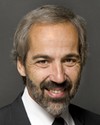Thank you for your answer. It was very complete, but that in no way alters the fact that it was real money, real amounts that were paid. Even if you call it an accounting mechanism, we can nevertheless agree that, when an amount is intended for a specific purpose, in this case to provide compensation for potential unemployment in a cyclical employment market, that money is set aside. In English, you used the words “flowed to”, as though some pieces of cork were floating on a river toward an undetermined location. No. It was the government of the time, a Liberal government—today the Conservatives want to close the two-way door—that stole $57 billion and put it in the government's Consolidated Revenue Fund. Now that money was used to provide $60 billion in fiscal room that, amazing to say, represents exactly the tax cut granted to the largest corporations, that is to say that the fiscal room was created by robbing the employment insurance fund. The money that was supposed to be there for unemployed workers is no longer there because it has been stolen and used for another purpose. It's a bit like in China, where they make you pay for the bullet they use to execute you.
All employers lost as a result, even the forest companies and the manufacturing companies in Beauce, which lost money and therefore didn't have to pay taxes. Those businesses paid into the employment insurance fund for every employee. That money was taken to create the fiscal room necessary to grant tax reductions. So, by definition, a company that lost money did not have to pay tax. So who benefited from the money that was stolen from the employment insurance fund? It was the richest businesses, such as in Canada, in Alberta, and other businesses in the oil industry that had paid taxes. They benefited from it.
In short, that money set aside was stolen and paid for the creation of fiscal room for the major corporations. In fact, it was the businesses that were already losing money that financed the rich oil companies in the west. That's the sad reality that we're trying to launder here today. We're talking about money laundering, but it's being done here today, a laundering by terminology, when we're told that
it “flowed to” and “it doesn't represent real money”.
That was real money. In addition, there will be a $19 billion deficit that, once again, will be paid for by businesses, regardless of whether they make money or not, and by all Canadian employees. It will be a punitive tax that, according to the Canadian Federation of Independent Business, will cost 200,000 jobs. That's what we're trying to launder today through a dismal terminology. We're saying there's no problem since it wasn't real money. I'm scandalized by this, Mr. Chairman.




